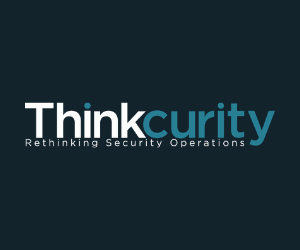While security may be an oversaturated industry with stiff competition, there are several ways for you to improve your sales and maximize your profit. If you want to stand out from the crowd, you'll need to re-evaluate your existing strategies and develop concrete plans to achieve your objectives.
This article will take you through all the stages, tips, and techniques you need to know to build your sales pipeline and achieve long-term success.
What is a Sales Pipeline, and Why Does it Matter?
A successful business starts with a good marketing strategy. The same holds for all industries, and security is no exception.
A sales pipeline is essentially a visual representation of your company's sales process. It can highlight your strengths and opportunities for growth because it details which part of the funnel your deals are made in, where they're stalling, and where sales activities bring in the most revenue to your company. Because of this, you can get valuable insights into the performance of your strategies. As a business owner, this will be essential in helping you forecast your profit and growth.
The Different Stages of the Sales Pipeline
Because the sales pipeline portrays the process of your company, it usually comes in different stages. Here, we'll give you the essential elements of this particular tool.
Prospecting
The first stage is known as prospecting. Here, you need to identify potential customers and clients you can get in touch with. But before doing that, you first need to know who they are and how they behave. Take a look at these techniques to help you get started.
- Create your customer persona: Your customer persona generally represents who your customer is. It should answer the following questions: who will benefit from your products and services? What type of clients do you want to work with? You can break down your target market by diving deep into their demographics, like age, gender, profession, social standing, hobbies, and family background.
- Get your target market's attention: Once you have a better idea of what your customer base looks like, it's time to find ways to get in touch with them by finding out what social platforms they're using, where they spend their time, and what content they want to see from you. This is where lead generation tactics come into play, so use traditional or online marketing to grab their attention and see if they want to partner with you.
Qualification
While in the first phase, you focused on reaching out to as many potential customers as possible. The next stage in the funnel encourages you to narrow down from potential customers to possible leads. In this step, you'll need to evaluate the people you've interacted with and see whether you want to keep them engaged or toss them out.
Proposal
When you think your leads are ready to further engage with you, it's time to move forward to the next stage: the proposal. Here, you will introduce what your company has to offer. Do you have new security technologies in place? New guard techniques to provide?
While you may have numerous products and services to offer, focus on aspects that your clients will benefit from the most. Doing so will increase your chances of closing the deal with them.
Closing
After you've moved past these steps, the only step left is to seal the deal. You'll need to do follow-ups, ask for feedback, and provide future services to keep them loyal to your business.
Tips to Build Your Sales Pipeline
While on the surface, it may seem like a simple procedure, the success of your pipeline depends on how well you develop it. That's why we're sharing helpful tips to ensure that you get it right.
Do Your Research
Always do prior research on consumer behavior, cultural trends, and recent events to ensure that your offerings match what the customers are looking for.
Build Engagement
When connecting with your audience, be as active as possible. Put up ads, call clients, and build your network. It's the only way for you to engage with them.
Scale it Down
Finally, be realistic. Don't create a pipeline that's hard to achieve. Doing so will only open room for disappointment.
Techniques to Enhance Your Pipeline
Although these tips and stages are good jumping-off points, they're not enough. It would be best to implement tried-and-tested techniques to ensure the efficiency of your pipeline. These include:
Customizing Your Stages
If you find that the initial stages don't work for you, feel free to add, remove, or modify them to fit your needs.
Finding a Routine
Besides that, you should develop a routine of meeting, strategizing, and aligning with your team to ensure that everyone's on the same page and is working towards the same goal.
Now that we've shared everything we know about a sales pipeline and how to build one, it's time to put these concepts into practice. Create your strategy and see how much it'll benefit your marketing efforts and your business. Happy growing!




